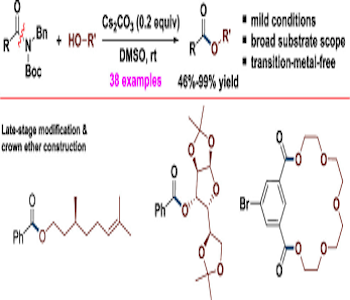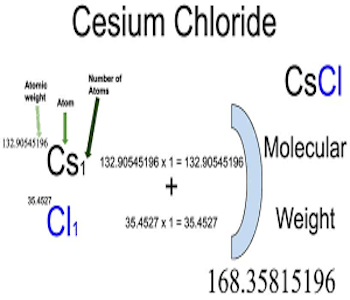Cesium is a rare and important metal element, and China faces challenges from Canada and the United States in terms of mining rights to the world’s largest cesium mine, Tanko Mine. Cesium plays an irreplaceable role in atomic clocks, solar cells, medicine, oil drilling, etc. It is also a strategic mineral because it can be used to make nuclear weapons and missiles.
Properties and applications of cesium.
Cesium is an extremely rare metal element, the content in nature is only 3ppm, and it is one of the elements with the lowest alkali metal content in the earth’s crust. Cesium has many unique physical and chemical properties such as extremely high electrical conductivity, extremely low melting point and strong light absorption, making it widely used in various fields.
In telecommunications, cesium is used to make fiber optic cables, photodetectors, lasers and other devices to improve the speed and quality of signal transmission. Cesium is also a key material for 5G communication technology because it can provide high-precision time synchronization services.
In the field of energy, cesium can be used to manufacture solar cells, ferrofluid generators, ion propulsion engines and other new energy devices to improve energy conversion and utilization efficiency. Cesium is also an important material in aerospace applications as it is used in satellite navigation systems, night vision imaging devices and ion cloud communications.
In medicine, cesium can be used to make drugs such as sleeping pills, sedatives, antiepileptic drugs, and improve the function of the human nervous system. Cesium is also used in radiation therapy, such as cancer treatment, such as prostate cancer.
In the chemical industry, cesium can be used to make catalysts, chemical reagents, electrolytes and other products to improve the rate and effectiveness of chemical reactions. Cesium is also an important material in oil drilling because it can be used to make high-density drilling fluids and can be used to improve the stability and efficiency of drilling fluids.
Distribution and utilization of global cesium resources. At present, the largest application of cesium is in the development of oil and natural gas. Its compounds cesium formate and cesium carbonate are high-density drilling fluids, which can improve the stability and efficiency of drilling fluids and prevent well wall collapse and gas leakage.
Minable cesium garnet deposits are found in only three places in the world: the Tanco mine in Canada, the Bikita mine in Zimbabwe and the Sinclair mine in Australia. Among them, the Tanco mining area is the largest cesium garnet mine discovered so far, accounting for 80% of the world’s cesium garnet resource reserves, and the average cesium oxide grade is 23.3%. Cesium oxide grades averaged 11.5% and 17% at the Bikita and Sinclair mines, respectively. These three mining areas are typical lithium cesium tantalum (LCT) pegmatite deposits, rich in cesium garnet, which is the main raw material for extracting cesium.
China acquisition and expansion plans for Tanco mines.
The United States is the world’s largest consumer of cesium, accounting for about 40%, followed by China. However, due to China’s monopoly on cesium mining and refining, almost all of the three major mines have been transferred to China.
Previously, after the Chinese company acquired the Tanko mine from an American company and resumed production in 2020, it also subscribed for a 5.72% stake in PWM and obtained the right to acquire all lithium, cesium and tantalum products of the Case Lake project. However, Canada last year required three Chinese lithium companies to sell or withdraw their stakes in Canadian lithium mining companies within 90 days, citing national security reasons.
Previously, Australia had rejected a Chinese company’s plan to acquire a 15% stake in Lynas, Australia’s largest rare earth producer. In addition to producing rare earths, Australia also has the right to develop the Sinclair mine. However, the cesium garnet developed in the first phase of the Sinclair mine was acquired by a foreign company CabotSF acquired by a Chinese company.
The Bikita mining area is the largest lithium-cesium-tantalum pegmatite deposit in Africa and has the world’s second largest cesium garnet resource reserves, with an average cesium oxide grade of 11.5%. The Chinese company bought a 51 percent stake in the mine from an Australian company for $165 million and plans to increase lithium concentrate production capacity to 180,000 tonnes per year in the coming years.
Canadian and US participation and competition in the Tanco Mine
Both Canada and the United States are members of the “Five Eyes Alliance” and have close political and military ties. Therefore, the United States can control the global supply of cesium resources or intervene through its allies, posing a strategic threat to China.
The Canadian government has listed cesium as a key mineral and has introduced a series of policy measures to protect and develop local industries. For example, in 2019, Canada and the United States signed a major mining cooperation agreement to promote cooperation between the two countries on the safety and reliability of the supply chain of minerals such as cesium. In 2020, Canada and Australia signed a similar agreement to jointly counter China’s influence in the global mineral market. Canada also supports local cesium ore development and processing companies such as PWM and Cabot through investments, grants and tax incentives.
As the world’s largest cesium consumer, the United States also attaches great importance to the strategic value and supply security of cesium. In 2018, the United States designated cesium as one of the 35 key minerals, and compiled a strategic report on key minerals, proposing a series of measures to ensure the long-term stable supply of cesium and other minerals.
The layout and dilemma of other cesium resources in China.
In addition to the Vikita mine, China is also looking for opportunities to acquire cesium resources in other regions. For example, in 2019, a Chinese company signed a cooperation agreement with a Peruvian company to jointly develop a salt lake project in southern Peru containing elements such as lithium, potassium, boron, magnesium, strontium, calcium, sodium, and cesium oxide. It is expected to be the second largest lithium production site in South America.
China is facing many difficulties and challenges in the allocation of global cesium resources.
First of all, global cesium resources are very scarce and scattered, and it is difficult for China to find large-scale, high-grade, and low-cost cesium deposits. Second, the global competition for key minerals such as cesium is becoming increasingly fierce, and China may face political and economic interference and obstacles from Canada, Australia and other countries’ investment reviews and restrictions on Chinese companies. Third, the extraction and processing technology of cesium is relatively complicated and expensive. How is China Responding to the Critical Minerals War?
In order to protect the national security and economic interests of China’s key mineral fields, the Chinese government plans to take the following active countermeasures:
Strengthen the exploration and development of cesium resources in the world, discover new cesium deposits, and improve the self-sufficiency and diversification of cesium resources.
Strengthen cesium recycling, improve cesium utilization efficiency and circulation speed, and reduce cesium waste and pollution.
Strengthen cesium scientific research and innovation, develop cesium alternative materials or technologies, and reduce cesium dependence and consumption.
Strengthen international cooperation and exchanges on cesium, establish a stable and fair cesium trade and investment mechanism with relevant countries, and maintain the healthy order of the global cesium market.







